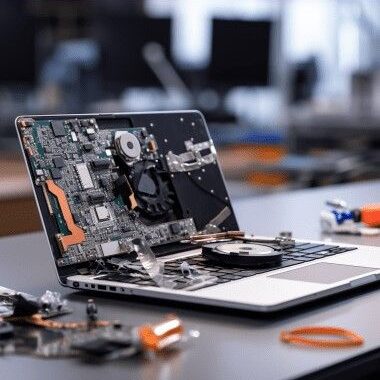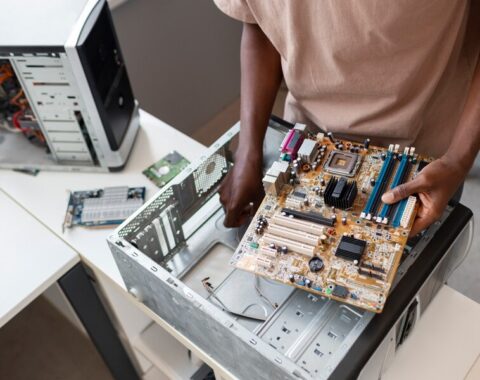As we focus on computer repair and maintenance , we remember how we have come a long way from the days of trial-and-error diagnostics, bulky hardware, and long downtimes.
Today, with the help of advanced technologies and modular systems designs these processes are faster, smarter, and more efficient with a direct impact on productivity across industries. In this article we will explore on how computer maintenance and repair has evolved across different sectors, the unique challenges each has faced, and how those challenges are being addressed today.( keeping in mind that computer involves both hardware and software)
Education Sector
Then: Schools operated with limited IT support and outdated hardware. When a computer failed, it could disrupt entire classrooms for days, especially during exam periods. Repairs often meant replacing whole units or waiting for external technicians.
Now: With cloud-based tools like Google Workspace and Microsoft 365, student data is backed up in real-time. Chromebooks and modular laptops can be quickly swapped out, reset, or reconfigured remotely, minimizing disruption.
Healthcare Sector
Then: Hospitals relied heavily on local machines for storing and accessing patient records. If a system went down, doctors and nurses were forced to revert to manual methods, risking delays and errors in patient care.
Now: Electronic Health Records (EHRs) are securely hosted in the cloud. Medical systems are supported by managed IT environments with remote monitoring, predictive diagnostics, and rapid hardware replacement services.
Retail Sector
Then: POS (Point of Sale) systems were server-dependent. Any failure in the hardware meant manual billing or service shutdowns, affecting customer experience and revenue.
Now: Retailers use cloud-based POS systems that can run on multiple devices, even tablets. Hardware is now plug-and-play and easier to replace, while software issues can be resolved remotely.
SMEs and Corporate Offices
Then: Businesses often suffered major losses due to unscheduled downtime, data loss, or lack of internal IT support. Even small upgrades, like adding RAM, required calling external technicians.
Now: With modular hardware, automated cloud backups, and remote monitoring tools, maintenance is often proactive. Systems can be upgraded or repaired in minutes rather than days, and most troubleshooting can be done without physical intervention.
How Modern Design Has Simplified Repair.
Modular Hardware: Components like RAM, SSDs, and batteries are easily accessible and replaceable.
Remote Monitoring: IT teams can detect and resolve issues before they escalate.
Cloud Infrastructure: Eliminates dependency on local machines for storage and access.
Hot Swapping and Redundancy: Businesses keep spare machines ready for instant use, reducing downtime.
Predictive Maintenance: Tools analyze system health in real-time, allowing preventive action.
The Impact: Less Downtime, More Productivity.
Today, businesses across all sectors benefit from reduced downtime, improved data security, and faster turnaround times when it comes to repairs and maintenance. By adopting modern technologies and designs, companies can ensure seamless operations even when technical issues arise.
And therefore it is right to say that :
The landscape of computer repair and maintenance has transformed dramatically. What once took hours or days can now be done in minutes. Whether you’re running a classroom, clinic, shop, or office — having the right systems and support in place is key to staying efficient and competitive in today’s digital world.



